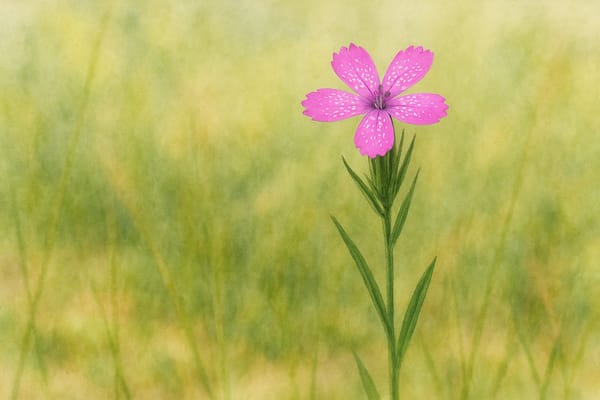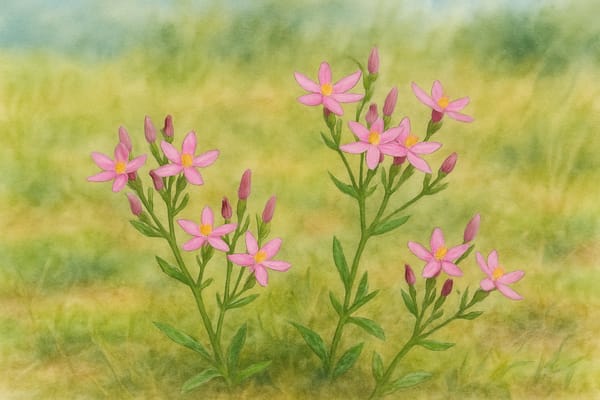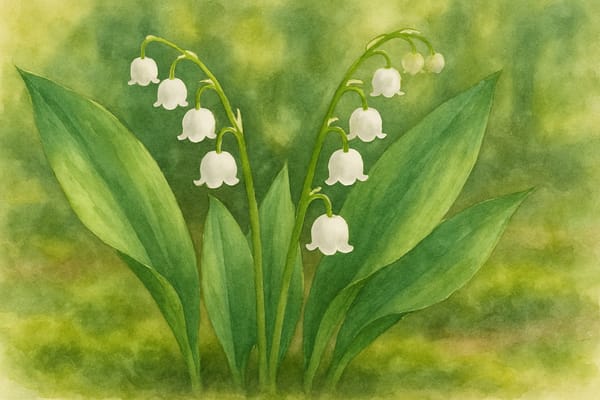A Wild Symbol of Love, Beauty, and Loss
Historical and Cultural Significance
Delicate and vivid, Deptford pink was once a cheerful wild companion in meadows and disturbed field edges across the UK. Though now rare, its roots in love symbolism and folk remedies linger like the perfume of forgotten wildflowers.
Named but Misplaced:
Despite its name, Deptford pink may never have grown abundantly in Deptford. The name stems from a 17th-century botanical misidentification by Thomas Johnson, but the flower itself was more common in rural pastures, field margins, and disturbed ground—including, historically, parts of Cornwall.
Language of Flowers:
In Victorian floriography, pinks like Dianthus armeria conveyed passion, admiration, and joy. Bouquets featuring this vibrant bloom were tokens of affection, and some traditions even linked it with luck in love.
Folk Uses:
Deptford pink has minor traditional medicinal uses, including treatment for fevers and digestive issues. The flowers were also used to produce a pink dye, lending both colour and symbolism to fabric in folk culture.
A Vanishing Treasure:
Now one of Britain’s most endangered wildflowers, Deptford pink is valued as a marker of traditional, wildlife-friendly farming. In Cornwall, only a few populations remain—making it a poignant symbol of both rural romance and ecological loss.
Growing Deptford Pink in Coastal Gardens
Elegant and easy-going, Deptford pink thrives in dry, sunny, low-nutrient soils—perfect for rockeries, gravel beds, and wildflower meadows near the sea.
| Requirement | Details |
|---|
| Light | Full sun preferred; tolerates light shade |
| Soil | Sandy, gravelly, or poor; well-drained |
| Moisture | Dry to moderately moist; drought-tolerant once established |
| pH | Neutral to slightly alkaline |
| Salt Tolerance | Moderate; tolerates coastal exposure |
| Hardiness | Hardy in the UK |
Coastal Care Tips
- Site Selection:
Plant in a bright, open spot with dry, gritty soil. Ideal for low-maintenance beds, footpaths, and naturalistic borders. - Sowing & Establishment:
Sow in autumn or spring. Scatter seeds on the soil surface and press gently—they need light to germinate. This short-lived biennial self-seeds freely. - Watering:
Water lightly until established. Afterwards, the plant is drought-hardy and requires little attention. - Fertiliser & Soil Care:
Avoid feeding—excess nutrients can lead to tall, floppy growth with fewer blooms. - Maintenance:
Deadhead for extended flowering and to encourage self-seeding. Keep surrounding vegetation in check to prevent overcrowding. - Pests:
Generally resilient, though young plants may be nibbled by slugs and snails.
Special Notes for Coastal Gardens
Deptford pink brings fine-textured grace and rich magenta colour to coastal settings. Its preference for well-drained, nutrient-poor soils makes it a charming addition to gravel paths, dry borders, and sunny wildflower patches—where it quietly supports pollinators and honours the fading beauty of traditional farmland flowers.
Quick-Glance Table
| Step | Traditional Tip |
|---|
| Soil & Sun | Full sun, dry and gritty soil; avoid rich composts |
| Sowing | Autumn or early spring, surface-sown for light exposure |
| Watering | Minimal once established |
| Pruning | Deadhead for more flowers and reseeding |
| Coastal Benefit | Colourful, hardy, and pollinator-friendly for sunny shorelines |











